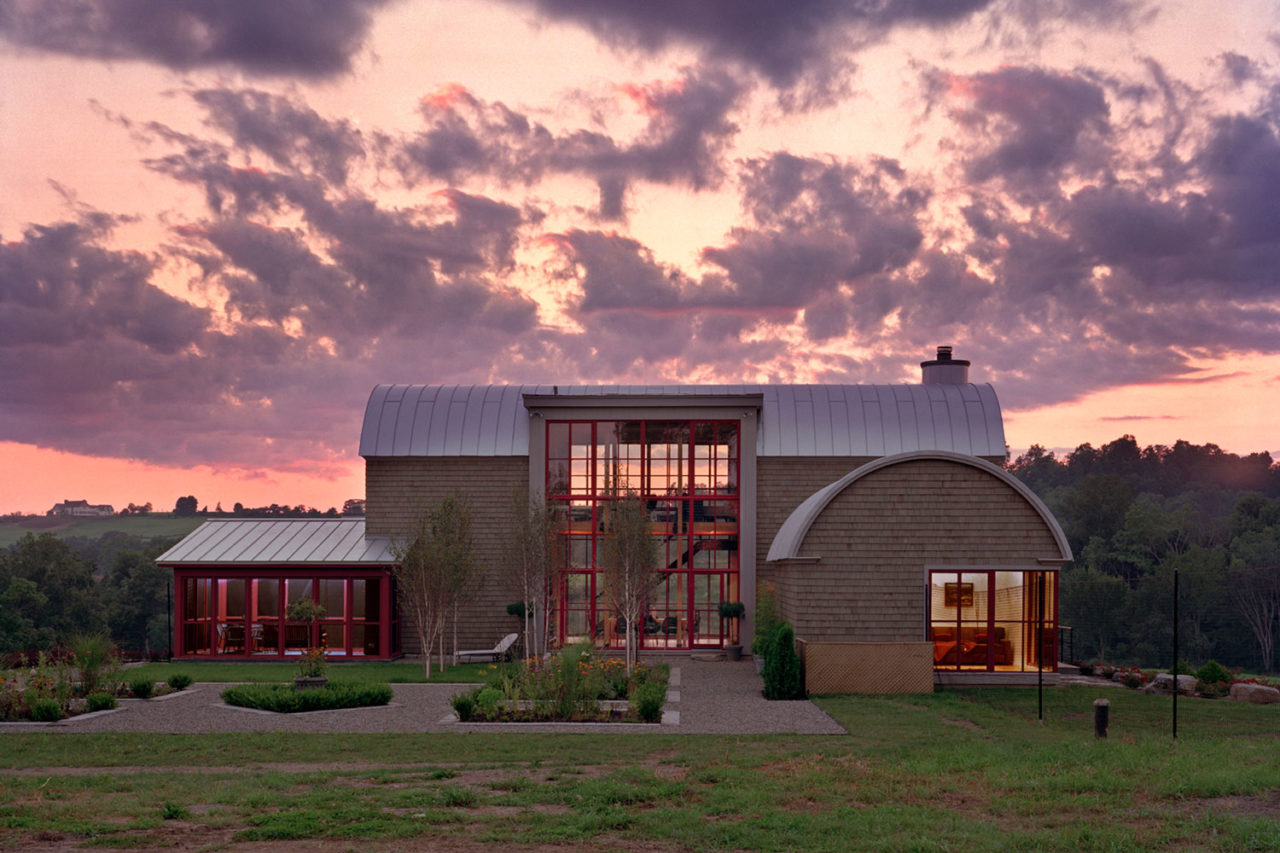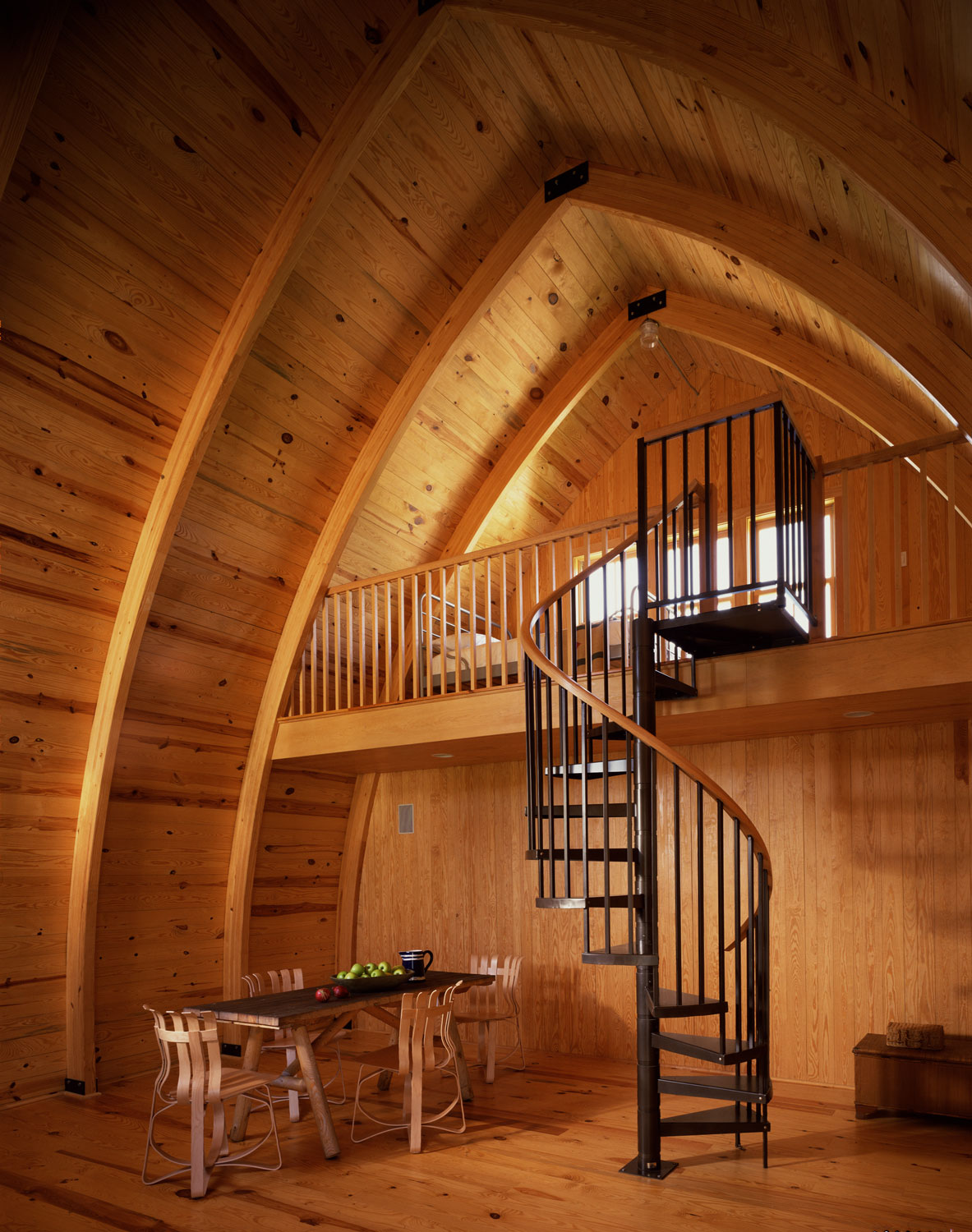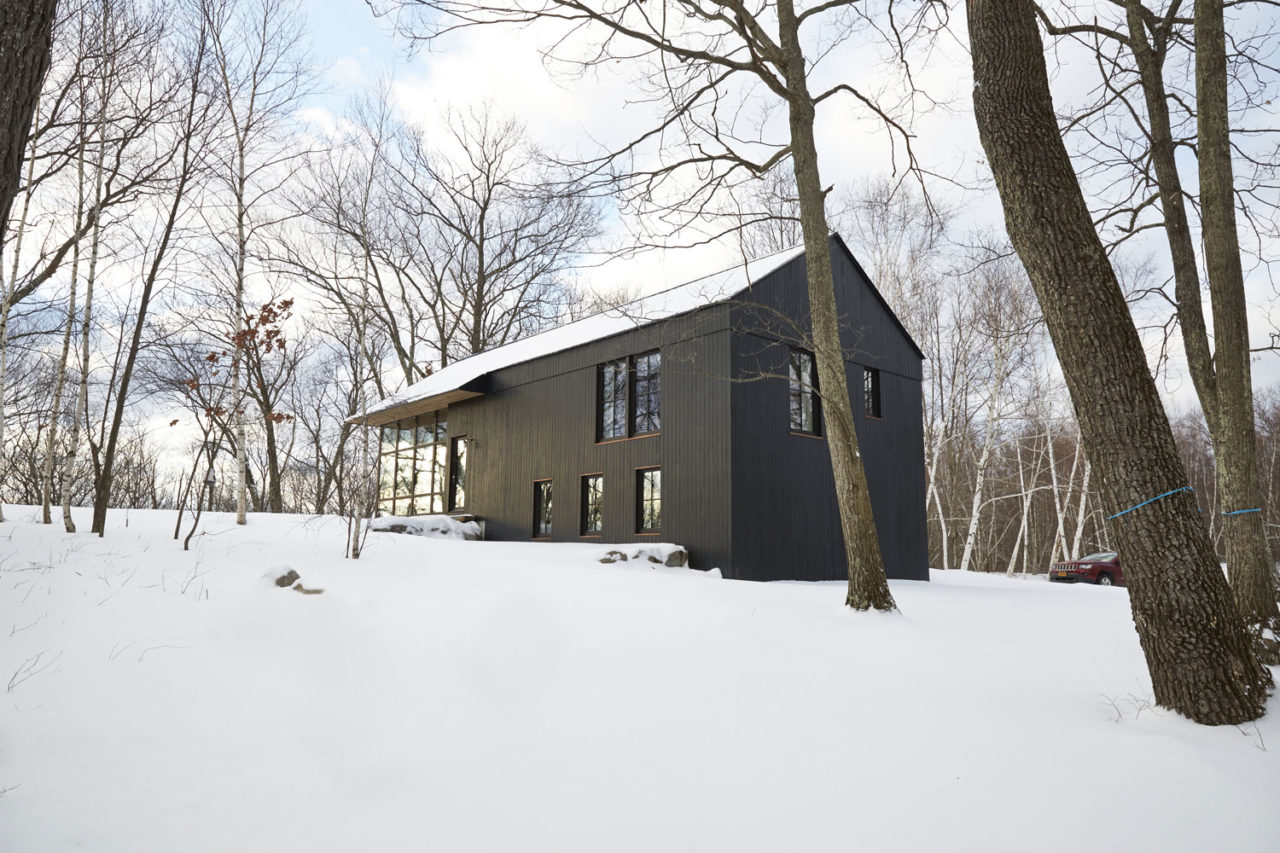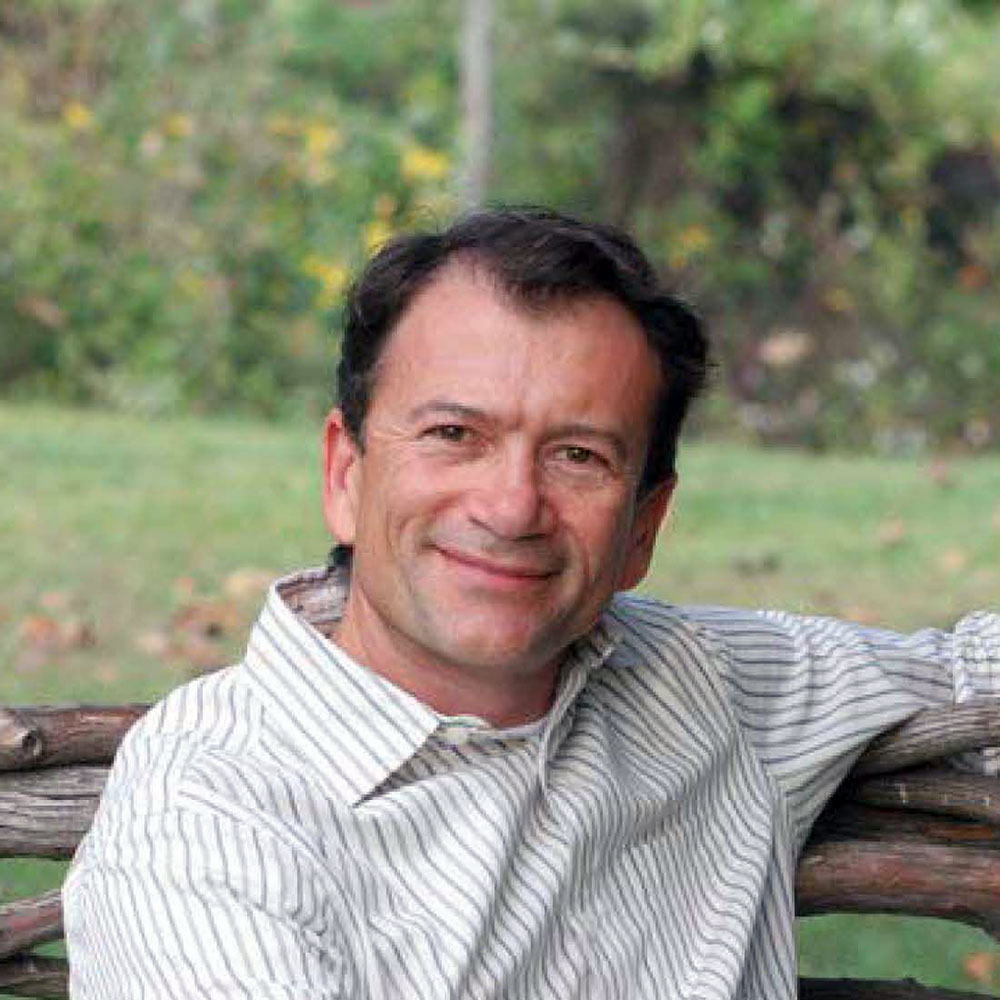by: AIA New York
As founder of BarlisWedlick Architects, Dennis Wedlick, FAIA, has built a practice best known for its experimentation in forms, materials, and high-performance technologies, through the design of custom residential homes. His Hudson Passive Project led to the formation of the Rural Build—a design strategy that allows Habitat for Humanity to cost-effectively build affordable Passive Houses in rural communities. Going further back, Wedlick’s career began working side-by-side Philip Johnson from 1982 through 1994. His first assignment was to create an archive of Johnson’s residential drawings, which was split between the Museum of Modern Art, Avery Library at Columbia University, and The Glass House. From there, Wedlick divided his time working with Johnson on renovations and additions to the Glass House and commissioned projects, such as One Detroit Center and Celebration Town Hall. Dennis Wedlick has refined the custom single-family home practice as a creative laboratory for eco-friendly design. Through his designs, writings, and advocacy, he disseminates the attributes of sustainability and builds coalitions to use green architecture for the greater good.
The Jury of Fellows of the AIA elevated Wedlick to the College of Fellows in the second category of Fellowship, which recognizes architects who have made efforts “To advance the science and art of planning and building by advancing the standards of architectural education, training, and practice,” according to the organization’s definition. Wedlick was recognized at the New Fellows Reception hosted by AIA New York and at an investiture ceremony at the AIA Conference on Architecture.
Q: What is influencing your work the most right now?
A: Currently, my focus is on affordable housing solutions for the rural workforce. The greatest influence on my work is experiments in high-performance technology and innovative planning techniques that reduce the cost of living in farming communities. In the Mid-Hudson Valley, upward mobility is being thwarted by high cost of living. For rural workforce families, housing costs—rent/mortgage, taxes, insurance, maintenance, and utilities—can consume up to sixty percent of their income, which translates to skilled labor with good paying jobs finding themselves house poor and living in substandard conditions. We have proven that, with a communal effort, farming communities can reduce the high cost of living by offering low-cost, zero-lot-line, Passive House developments.
Q: What has been particularly challenging in your recent work?
A: The rural workforce marketplace is particularly challenging for architects who are aiming to encourage sustainable housing solutions. There is no shortage of land, no lack of government support, and no lack of community support; however, there is a marketplace problem: 1) The income of the typical rural workforce households is to low to secure market-rate, code-compliant housing. 2) The rural workforce household isn’t motivated to seek/participate in subsidized, smart growth housing opportunities. As downward mobility becomes more prevalent in rural areas that are regulated by smart growth initiatives, it becomes increasingly challenging for designers to advocate for high-performance architecture, such as Passive House. We believe that the solution is to consider exceptions to these regulations for low-cost, low-energy housing developments that targets the rural workforce.
Q: What do you think are the biggest challenges, or opportunities, facing cities today?
A: Our nation is becoming ever increasingly urban. Nonetheless, good growth initiatives for urban regions can’t be achieved without a viable food shed, healthy water supply, and clean air, all of which originate in the exurban landscape. Conservation efforts for rural communities are pointless without a rural workforce to maintain the resources. Further, when a rural economy becomes economically depressed, it is vulnerable to lobbying efforts to deregulate polluting industry.
Q: What do you see as an architect’s role—and responsibility—within our culture?
A: Here in New York City, farm-to-table is a booming cultural phenomenon, and architects have joined the advocacy for land and agricultural conservation; but, what have we done to advocate for the agricultural workforce: Nearly all are house poor. Our nearby farming communities are losing agricultural workforce families because of the high-cost of living, which is an unintended consequence of conservation efforts. Affordable housing solutions targeted for the rural workforce are required to retain them. It is our responsibility to find those solutions.
Q: What are your greatest sources of inspiration?
A: The people I live among and work with.
Editors’ Note: This feature is part of a series celebrating the members of the American Institute of Architects (AIA) New York Chapter who are elevated each year to the AIA College of Fellows, an honor awarded to members who have made significant contributions to both the profession and society. Learn more about Fellowship here.











